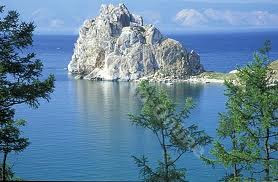Plitvice Lakes are a series of sixteen lakes, spectacular waterfalls, to each other, which is located deep in the woods and live deer, bears, wolves, boars and rare bird species. UNESCO World Heritage Site, the lakes are known for their distinctive colors, Azure is always green, gray or blue. The colors are always changing, depending on the amount of minerals or organisms in the water and the angle of sunlight.
Boiling Lake (Dominica
Boiling Lake is located in the Morne Trois Pitons National Park , World Heritage Sites in Dominica Roseau , the Caribbean . It is filled with water bubbles blue-gray, which is usually wrapped in a cloud of steam. The lake is about 60 m in diameter.
Red Lagoon (Bolivia
Laguna Colorada (Red Lagoon) is low in Salt Lake southwest of the Altiplano in Bolivia, near the border with Chile The lake contains borax islands, whose white color contrasts nicely reddish color of its waters, caused by red sediments and pigmentation algae.
The Hai Wuhua or five Fleur du Lac, signing Jiuzhaigon National Park in China Pearl Shoal Waterfall.
Dead Sea (Israel and Jordan
Dead Sea Salt Lake is located in Israel and the West Bank to the west and Jordan Dead Sea is 330 m (1083 ft) deep, the deepest hypersaline lake in the world. It 'also the world's second saltiest body of water, while Lake Assal in Djibouti Dead Sea , 67 km (42 miles) long and 18 km (11 miles) wide at its widest. It is located in the Jordan Rift Valley, and its main tributary is the Jordan
The Dead Sea has attracted visitors from around the Mediterranean for thousands of years. Biblically, it is a place of refuge for King David. It was one of the stations in the world of health first (by Herod the Great), and was the supplier of a wide variety of products, balms for Egyptian mummification to potash for fertilizers.
Lake Baikal is located in southern Siberia in Russia , and is also known as the "Blue Eye of Siberia ". It contains more water than all the lakes of North America combined. At 1637 meters (5371 feet), Lake Baikal Lake Baikal contains one-third less water than the Caspian Sea , which is the largest lake in the world. Lake Baikal was formed in ancient Rift Valley, and therefore is long and crescent-shaped area (31500 km ²), slightly less than Lake Superior and Lake Victoria . Baikal is home to over 1700 species of plants and animals, two thirds of which are found nowhere else in the world and was declared a UNESCO World Heritage List in 1996. Over 25 million years, is the oldest lake in the world.
Lake Titicaca (Bolivia and Peru
Lake Titicaca is a lake located in the border between Bolivia and Peru South America . Lake Titicaca has been used rainfall and meltwater from glaciers that end up in the Sierras Altiplano.
Caspian Sea (Russia
Caspian Sea is the largest lake in the world and the largest lake in the world, and accounts for 40-44 percent of the lake water all over the world. Covering an area of 394299 km ² (152,240 sq km), has an area over the next six largest lakes combined.
Crater Lake (USA
Crater Lake is a crater lake in Oregon, due to several unique factors, most prominently that it has no inlets or tributaries, the water in Crater Lake is considered a of the brightest in the world. The lake partly fills a crater almost 4,000 feet (1,220 m) deep that was formed around 5677 (± 150) BC to the collapse of the volcano Mount Mazama. Its deepest point was measured at 1949 feet (594 m) deep, making it the deepest lake in the United States










No comments:
Post a Comment